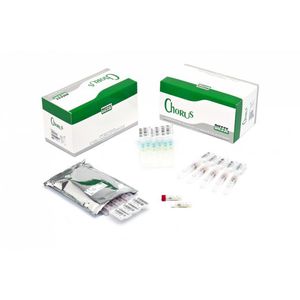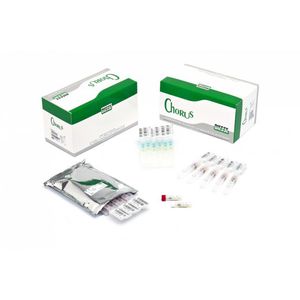
- Laboratory
- Laboratory medicine
- Infectious disease test kit
- Diesse Diagnostica Senese
Virus assay kit 81067serumELISA
Add to favorites
Compare this product
Characteristics
- Micro-organism
- virus
- Sample type
- serum
- Analysis mode
- ELISA
- Result display time
30 min
- Specificity
93 %
- Sensitivity
87 %
Description
The Toscana Virus, belonging to the Phlebovirus genus of the Bunyaviridiae family, was isolated for the first time in Italy in 1971. Since then, its presence in the mediterranean area has been established and its role as an etiological agent in human disease has been demonstrated. The disease caused by Toscana Virus is characterized by fever, strong headache and meningitis or meningoencephalitis. The infection is transmitted by hematophagous insects of the
Phlebotomus genus and is seasonal with a peak in the summer months, due to the life cycle of the vector.
Epidemiological data indicate that in areas where the Toscana Virus is endemic, many, perhaps the majority of cases of aseptic meningitis during the summer period are caused by this virus. Until now, the diagnosis of Toscana virus
infection has been mainly performed serologically. Specific antibodies of the IgM class are present during the acute
phase, while the presence of specific IgG antibodies in the absence of IgM indicates a previous infection.
All theserological methods adopted up to the present time require propagation of the virus in cell cultures; these methods can only be performed in specialized laboratories, while the infection canno tbe diagnosed in the majority of s erological laboratories. As it has been shown that the viral nucleoprotein is the chief target of the anti-Toscana virus antibodies, this has been expressed by recombinant DNA technology in E. coli and used to set up an immunoenzymatic kit for the detection of specific IgG and IgM, as an aid in the serological study of this virus.
Catalogs
No catalogs are available for this product.
See all of Diesse Diagnostica Senese‘s catalogsRelated Searches
- Assay kit
- Blood assay kit
- Serum assay kit
- Immunoassay assay kit
- Plasma assay kit
- Infectious disease detection kit
- Blood rapid diagnostic test
- Rapid lateral flow test
- Immunoassay rapid diagnostic test
- Cassette rapid diagnostic test
- Rapid virus test
- Respiratory infection test kit
- Clinical assay kit
- Whole blood rapid diagnostic test
- Rapid respiratory infection test
- ELISA assay kit
- IgG test kit
- COVID-19 rapid diagnostic test
- Feces test kit
- Influenza A assay kit
*Prices are pre-tax. They exclude delivery charges and customs duties and do not include additional charges for installation or activation options. Prices are indicative only and may vary by country, with changes to the cost of raw materials and exchange rates.


















